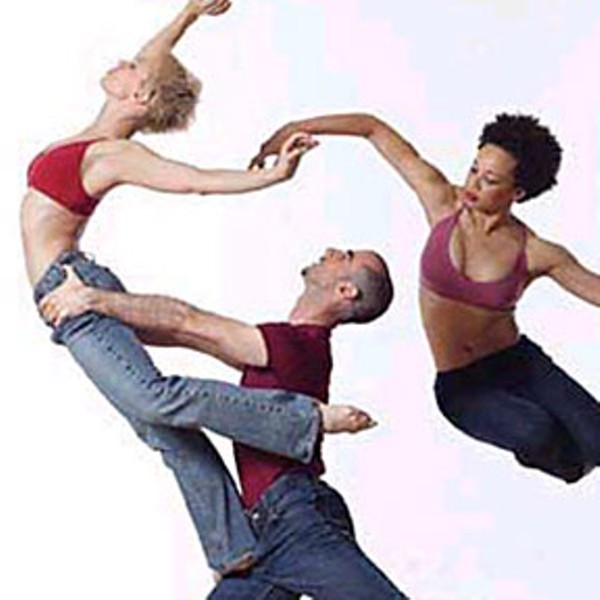Performance May 10 at the Van Duzer Theater.
"That was cool," my 9-year-old exclaimed as the light went out after Hand Dance,performed by Parsons Dance, choreographed by artistic director David Parsons, a former principal dancer of The Paul Taylor Dance Company. Five pairs of hands were all that appeared, moving clever and playfully in the blackness to a high-spirited musical arrangement by Kenji Bunch including piano and fiddle. High-spirited is an adjective that could be used to describe all the work presented at the Van Duzer on Saturday night. Parson's choreography is known for its buoyant attitudes and extreme athleticism, the dancers young and able, performing at the high-octane level of NBA players.
Beauty, strength, athleticism, risky lifts — what more could one want?
I felt like Scrooge after hearing the cheers from the thrilled audience, because I wasn't cheering. Well, maybe a few times. In reviews of the same pieces, Jennifer Dunning of the New York Times and Deborah Jowitt of the Village Voice wrote glowing remarks, Jowitt attesting, "Parson's choreography goes down like ice cream." The work is upbeat and mainstream. Like eating ice cream, people like it — a lot.
But ice cream is not a meal.
Parsons, like Taylor before him, is a master of intricate floor patterns, moving ensembles across and through stage-space, evidenced in the evening's opener, "Closure." In an attempt to shut up the critic in me, I sat back and let myself share in the excitement, then the music changed to something sappy and the choreography went sappy, too. The tempo and mood changes in the trite score by Tony Powell were imitated by the dancers. There seemed no internal motivation, beyond the shifts in music. Amazing jumps and breathtaking lifts that should have translated into the sheer joy of being alive, fell short due to the lack of substance.
In the piece "Nascimiento Novo", danced to a colorful score by Brazilian composer Milton Nascimento, the dancers rarely connected with each other. It was all so fast and bright and beautiful. When moving at the speed of light it's difficult to emote, granted, and that is part of the reason the works felt redundant. Late into the piece a duet touched me. Parsons' movements have luscious curves and twists of the torso. The pair began to move together in sweet unison. I saw wonderful, satisfying movement and then it was gone. Poof!
Caught, a signature piece from 1982, is a remarkable feat of stage artistry and physical stamina. Miguel Quinones stood, bare-chested, in a pool of light, not unlike DaVinci's "Vitruvian Man" — sublime, physically perfect. A strobe light flashed, capturing the dancer in the air — yes, he must time his jumps so that he is up whenever the light flashes on, creating the illusion that he never comes down. At brief intervals, we saw his chest heaving with exertion, profoundly human, vulnerable.
The same bare chest did not work in a solo section of "In the End."We had witnessed Quinones' magnificence inCaught. We had become intimate. It was overkill to undress him again. Such a satisfying performer, my eye went to him during this last piece and there it was: connection with other dancers. All the dancers revealed flashes of an inner life, yet mostly exhibited the technique the choreography asked for.


Comments